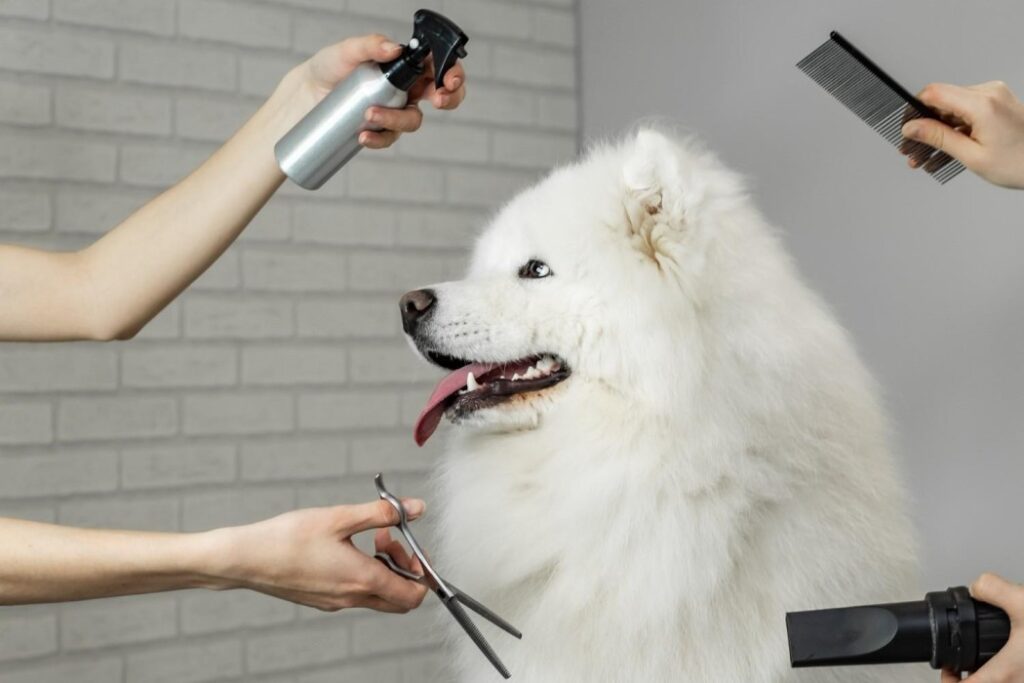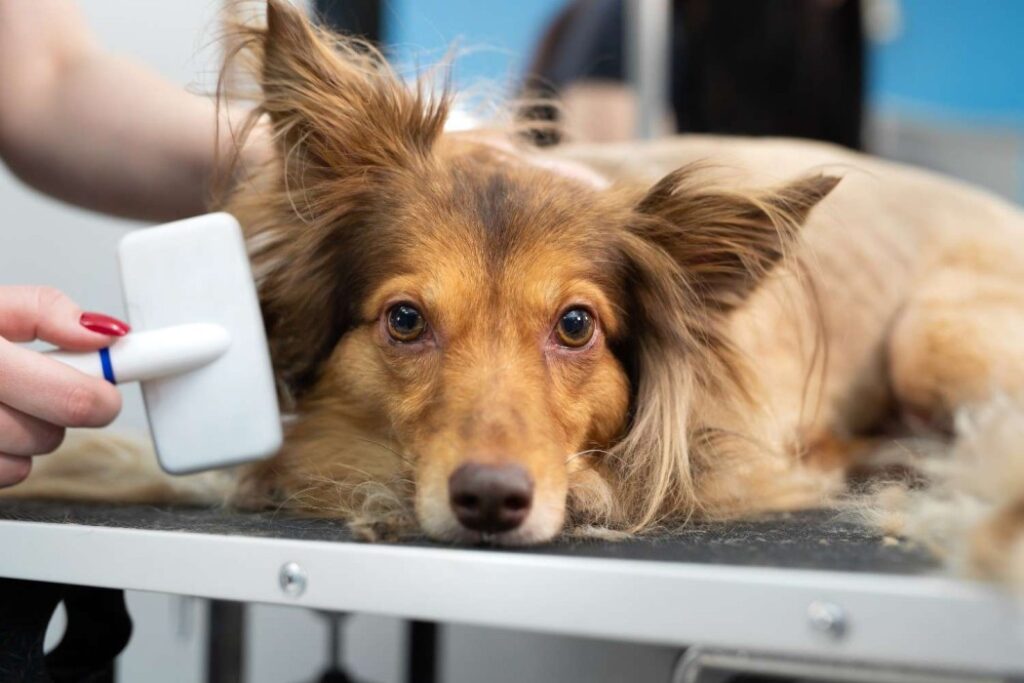Giving a bath to a puppy is like untangling insanity, but grooming an older dog is like combing a philosopher—they’ve seen it all. Knowing the difference between grooming a puppy and an adult dog can make the process easier for pet groomers and parents. Understanding these differences makes the grooming experience calmer and more peaceful; learn more with us.

Introduction to Grooming
Puppies are introduced to grooming practices at a young age, emphasizing gentle handling and good relationships. The initial puppy grooming experiences are critical because they affect the puppy’s view of grooming for the rest of his life. Adult dogs may already have grooming habits in place or may require time to adjust to new grooming methods.
Adaptation and Patience
Puppies are curious and lively, making grooming a learning experience for them. When grooming a puppy, patience is essential since they may need to be more fidgety or less tolerant of grooming activities than older dogs that have gotten accustomed to the practice.
Training and Conditioning
A pet parent must focus on teaching their puppies to accept dog grooming practices, including brushing, washing, and nail clipping. This training period is essential to their growth since it ensures they are familiar with grooming procedures as they mature. Adult dogs may have already established grooming habits and preferences, whether favorable or unpleasant.
Handling Size and Growth
Puppies grow and develop quickly. Thus, their dog grooming services techniques and products may differ from those used on older dogs. To guarantee gentle grooming, take special care of a puppy’s fragile skin, tiny stature, and growing coat.
Consistency and Frequency

Puppies often require regular puppy grooming sessions to acclimate them to the procedure and maintain their cleanliness while exploring their surroundings. Depending on the breed and individual demands, the frequency may reduce as they age into adults.
Specific Health Concerns
The professional dog salon says puppies are more vulnerable to health concerns such as skin irritations, parasites, and dental problems. Puppies may require more comprehensive examinations during grooming sessions to identify and avoid these concerns early on. Adult dogs may have unique health issues requiring customized grooming procedures, such as arthritis or skin disorders.
Introducing Tools and Products
Puppies should be gently and carefully introduced to dog grooming tools and supplies. To prevent overwhelming or creating discomfort, use products made particularly for pups. Adult dogs may already be comfortable with grooming equipment, but they may require patience and sound reinforcement if they have had poor grooming experiences.
Differences in Temperament and Behavior
The temperament and behavior of puppies are different from that of adult dogs. They may be more energetic or easily distracted, so professional dog grooming services say to shorten grooming sessions. Adult dogs’ grooming behavior may be more stable. However, some may still require reassurance or positive reinforcement.
Finally, because of the developmental phases, adaptability, and unique demands of each, grooming a puppy and an adult dog differ significantly. Grooming puppies and adult dogs require patience, positive reinforcement, and a gentle approach to provide a happy grooming experience throughout their lives.

0 Comments